Recommended courses

The city of Kumamoto began as a mere castle town, and many historical landmarks around the city today remind us of this samurai past. With the Samurai Program, visitors can learn about samurai culture and experience the traditions of a bygone era, all while enjoying Kumamoto's beautiful, natural scenery and local cuisine. Come and personally experience the seasonal flavours!
START
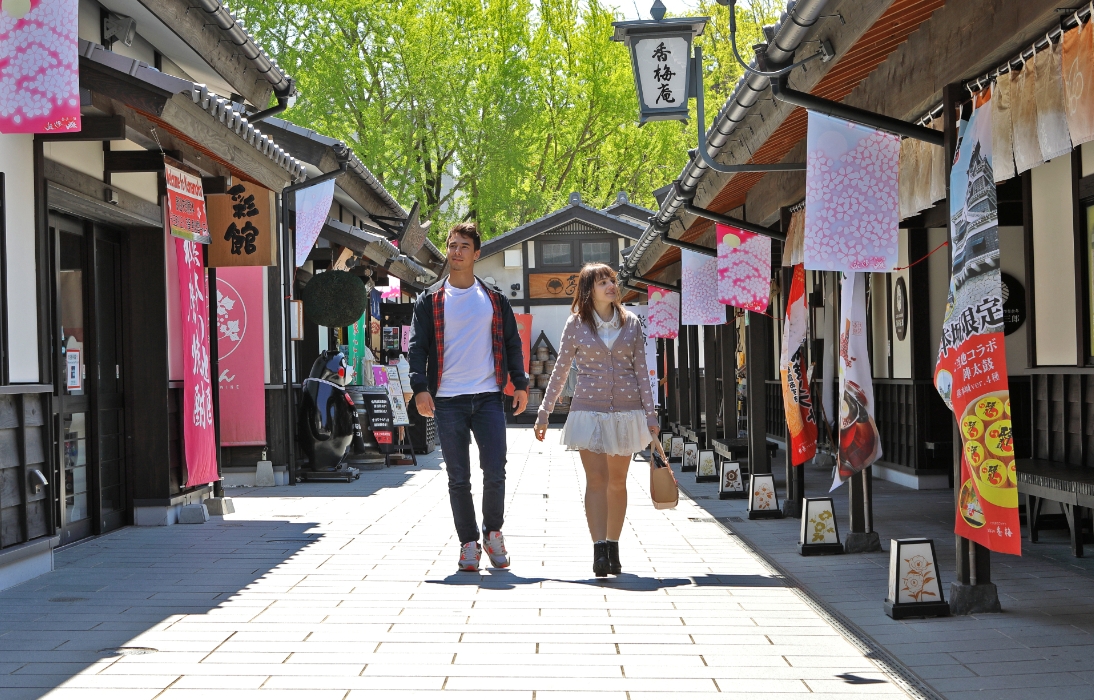
Kumamoto - A Journey
of Discovery - Starts
Here!
The Sakuranobaba Jōsaien Tourist Facility is situated at the foot of Kumamoto Castle - one of the three most famous castles in Japan. Radiating traditional charm, this is a place where visitors can sample the region's cuisine and history. Kumamoto is simply bursting with attractions to discover - so why not start your journey at Sakuranobaba Jōsaien?
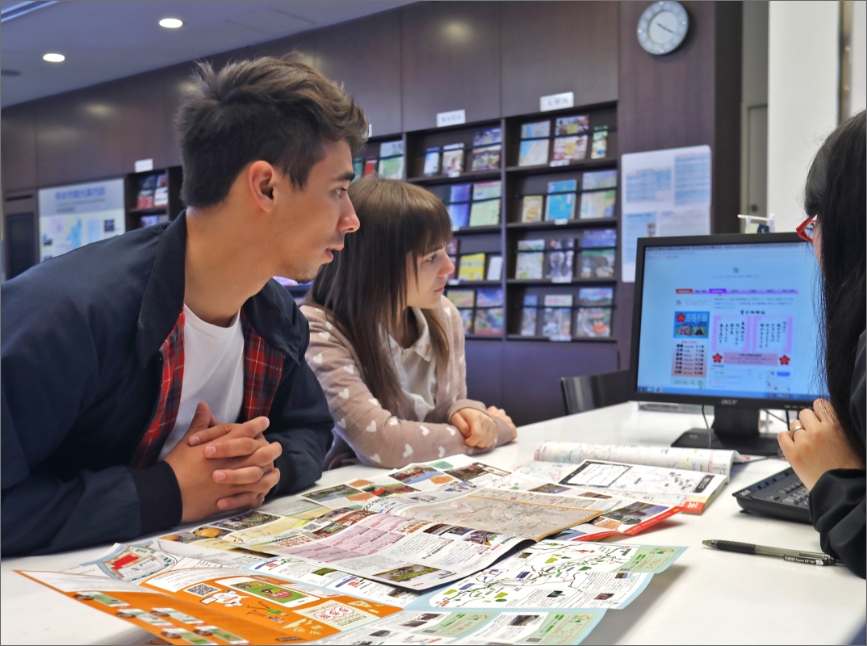
TThis tourist facility provides information about the various sightseeing attractions offered in all of Kumamoto Prefecture (with a particular focus on those attractions located within Kumamoto city). Visitors are welcome at the tourist information windows, where they can learn about popular sightseeing spots, recommended seasonal events, types of accomodation, public transport facilities, and even receive in-depth information about local places and events. In addition to the pamphlets and maps written in four languages (Japanese, English, Korean and Chinese), the staff at the counters speak both English and Chinese.
The Tourist Information Center
Free WiFi is
available
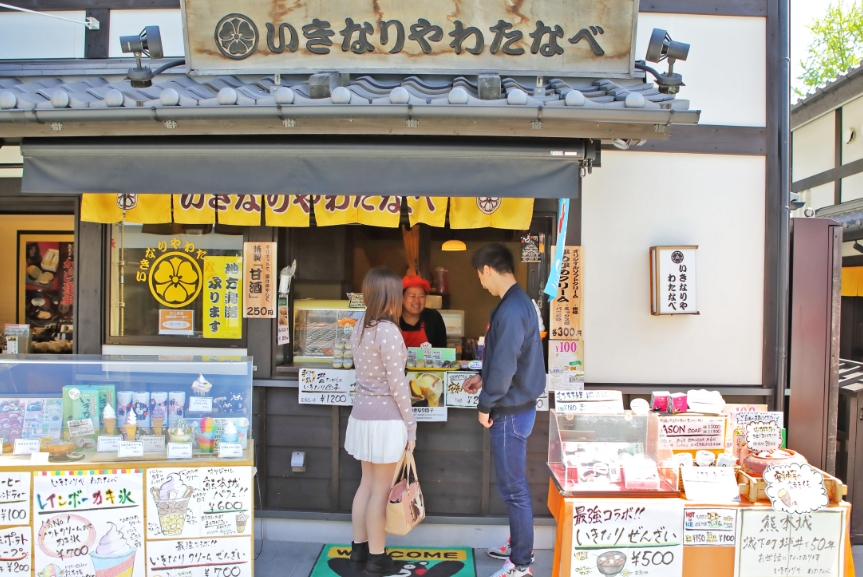
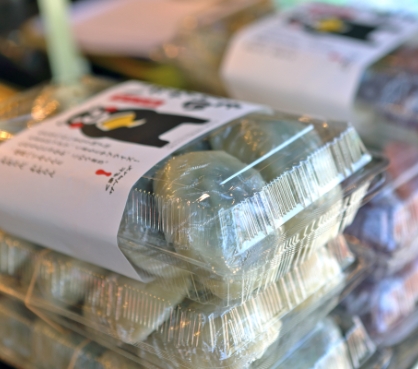

Kumamoto is the home of 'Ikinari Dango', a kind of local confectionary. Taking the form of either a rice cake or a steamed, wheat-flour dough bun, Ikinari Dango are stuffed with bean jam and sweet potato filling. The soft, freshly baked texture of the sweet potato, combined with its sweet and simple flavours, fill your mouth with a taste sensation. Surprisingly filling, they are best eaten when feeling a little peckish. 'Ikinari Watanabe' is a group of food retail outlets that sell all kinds of Ikinari Dango. This includes the Cheese Soy Sauce variety exclusive to Kumamoto Castle. Different varieties / products are available depending on the season and always prove popular. There is no need to worry about speaking Japanese - English speaking staff are always available and happy to help.

Simple Yet Delicious - the Unique and Highly
Recommended 'Cheese Soy Sauce' Ikinari Dango!

Just One is Enough to Satisfy the Biggest Appetite!
Ikinari Watanabe

The stately establishments that line these streets are reproductions of Edo-period castle-town buildings. Here, visitors have the choice of 23 food parlours from which they can sample the best of Kumamoto's foodstuffs and cuisine. From local products to menus exclusive to Kumamoto, visitors can let their eyes and tastebuds feast on Kumamoto's food culture. Moreover, by viewing performances of actors in authentic samurai dress, guests can become acquainted with samurai hospitality rituals from feudal times.

Every last inch of Johsaien recalls the atmosphere of ancient times. You can enjoy yourself by watching the samurai!

Successfully conveys an atmosphere of long ago - this place was the best!
The iconic prefectural character "Higomaru"also makes appearances here every Sunday, Tuesday and Wednesday - as well as every other Friday and Saturday.
Visitors may view an onstage dance performance, or take part in a round-table discussion, etc. (In the event of bad weather or other such unforseen circumstance, the establishment reserves the right to change the schedule at short notice)
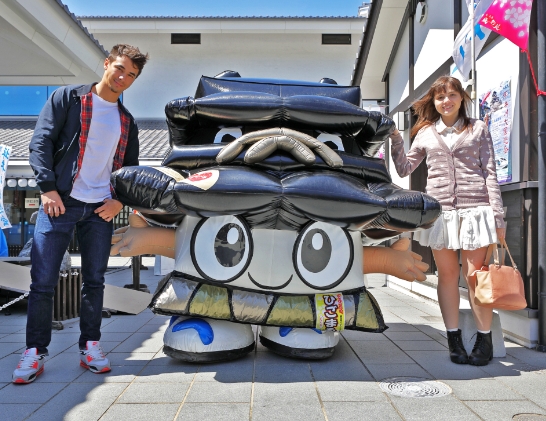
Enjoy Panoramic Views of Kumamoto
City and Learn about its Founder
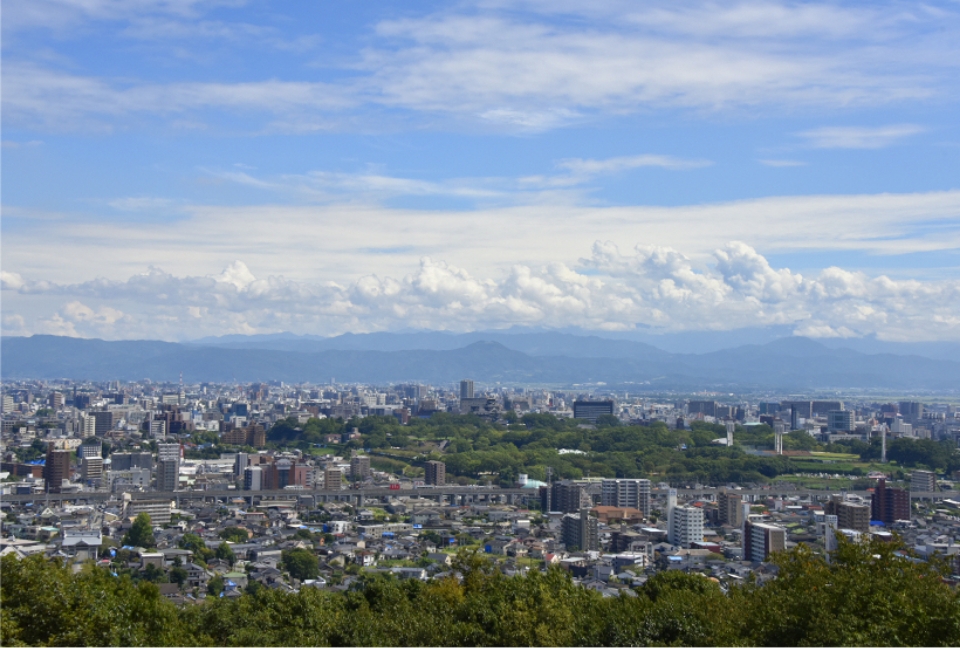
Within the park there is a statue of Kiyomasa Katō, the founding feudal lord of Higo Domain. This statue provides an ideal vantage point from which to view Kumamoto Castle and the urban landscape of Kumamoto City. It also affords particularly beautiful night views. Kiyosama Katō aimed and succeeded in building a thriving castle town. He oversaw the construction of road networks, established new rice fields, built irrigation systems and assisted in devising effective means of flood control. All these measures helped Kumamoto City become a cornerstone of modern development, and its castle is now counted among the three most famous castles in Japan. From its high vantage point, the statue of Kiyomasa Katō is thought to watch over and protect the city of Kumamoto to this day.
Take a Break Like a
Traveler of Ancient
Times
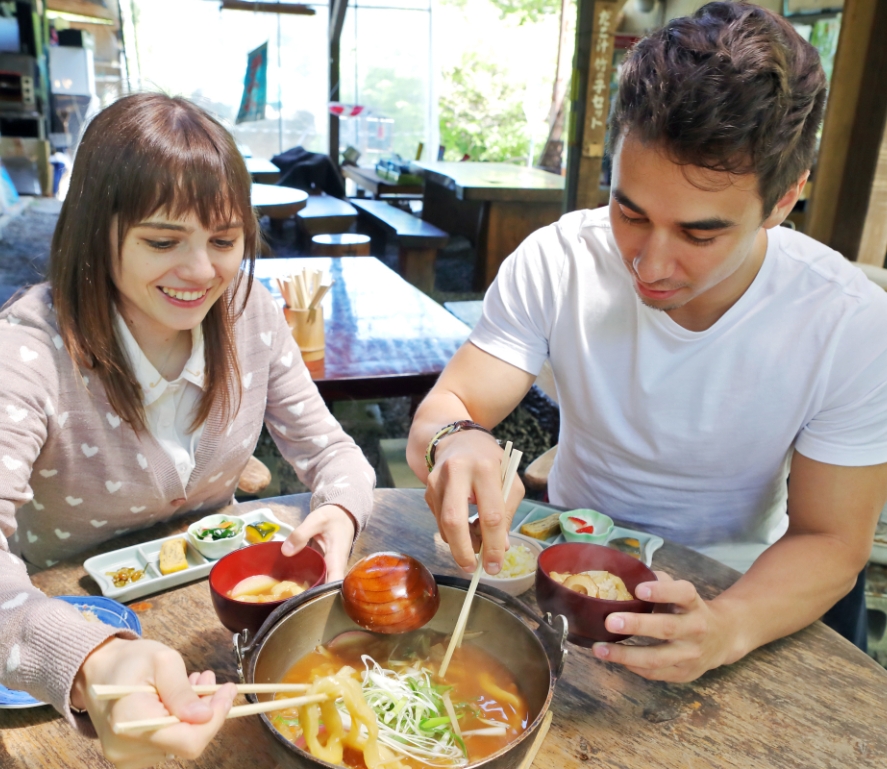
This teahouse is a reproduction of an actual teahouse frequented by Natsume Souseki, the Japanese author whose works personify Japan's Meiji period. Having visited the teahouse during his travels, he often featured it in his writing. The area is surrounded by lush bamboo greenery and nowadays serves as a public park. In days of old, when the primary means of travel was by foot, the location served as a teahouse where travelers took their rest. Of course, traveling samurai also frequented the teahouse in order to relax and recuperate. Why not follow in the steps of the samurai and take a breather at this elegant venue?

The various unique flavors of 'dago' are absolutely delicious

I tasted a Teahouse Manjū Bun for the first time!
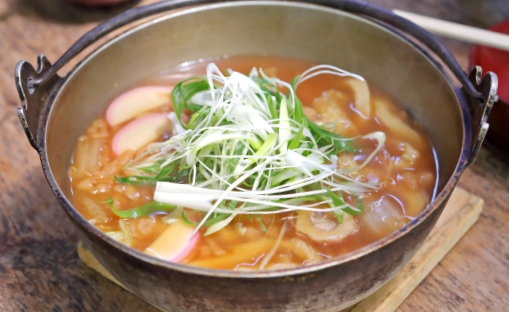
Concealed in a corner of the park is the quietly unobtruisve, yet well-established 'Dagojiru Shop'. It is well-known for its repeat customers and for selling the famous local speciality, 'Dagojiru Soup'. Presented to patrons in a piping hot iron pot, this soup is a condensed mixture of vegetables, Shiitake mushrooms and chicken flavoring. Added to the soup are rice dumplings the thickness of exceptionally large udon noodles. Patrons can also partake of cooked rice mixed with bamboo sprouts, as well as other various culinary delights on offer.
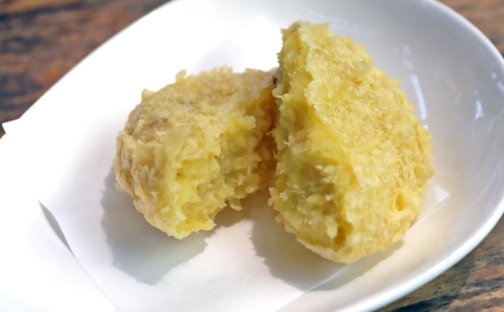
The Dagojiru Shop is also famous for its confectionary, particularly the 'Teahouse Manjū Bun'. Made from a recipe that has been handed down through generations, these buns make use of the unique texture and flavour of sweet potatoes.

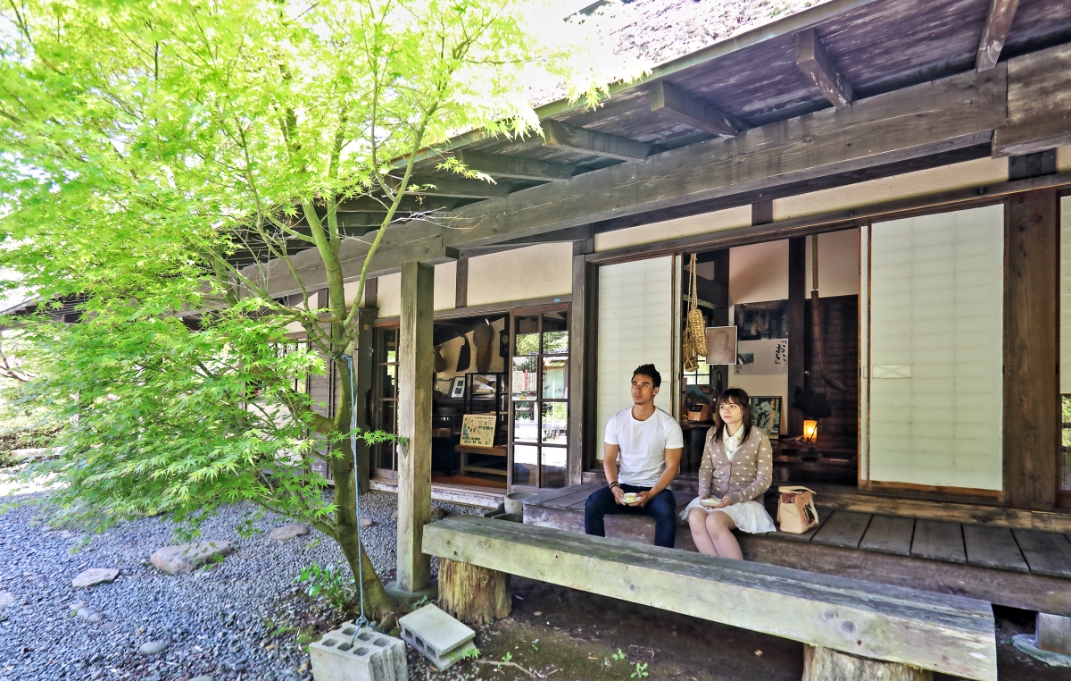
Surrounded by lush greenery and located within a Japanese-style house with
a thatched roof, there is an artefacts museum dedicated to the author Natsume
Souseki. It is open to the public.

It's great, being surrounded by nature and enjoying the atmosphere!
A Picturesque, Undisturbed Woodland - A Place
Where Visitors Can Experience the Culture and
Spirit of Japan.
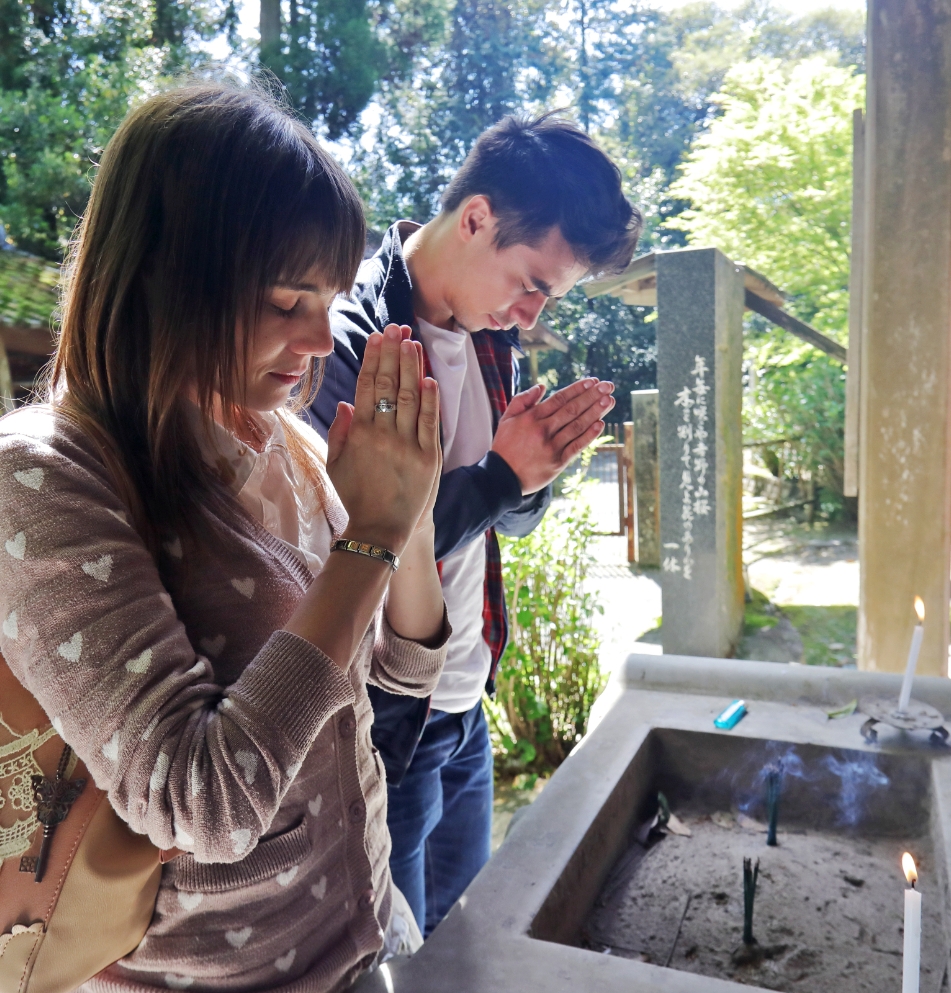
To the west of Kumamoto City, the mysterious Unganzenki Temple lies at the foot of Mt. Kinpō. Situated on sacred ground and under a dense cover of trees, the temple is thought to have been constructed in 1351. On the other side of the mountain, one can see stone statues of the 'Gohyakurakan' (The Five Hundred Disciples of Buddha), and Reigandō Cave. Offering beautiful natural scenery and a majestic atmosphere all year round, the hiking trails around Unganzenji Temple are truly superb. The terraced ricefields that pervade the region recall memories of a simpler time in Japan. Such undeveloped and undisturbed landscapes will make you feel as though you have stepped back in time.

Let's worship at the main temple building
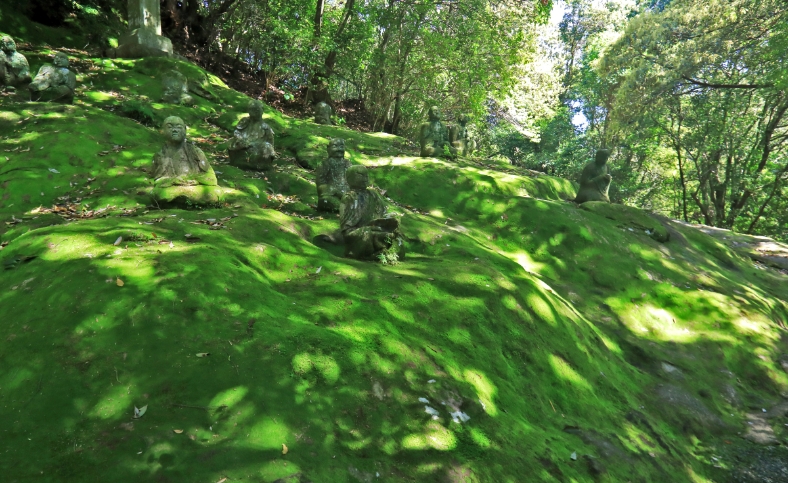
Walking from Unganzenji Temple to Reigandō Cave, visitors will follow a narrow path that has been carved into the rocky mountain outcrop. Along this path, one can observe a long row of stone statues, known as the Gohyakurakan, or the Five Hundred Disciples of Buddha. It is said that these stone images were constructed approximately 200 years ago by a Kumamoto merchant over a period of 24 years. Intended as religious offering, each Buddha statue has a unique physical form and facial expression, which lends the area an air of palpable mystery. In the summer time, visitors can rest and cool down in the shade of the trees whilst admiring the sunlight filtering through the branches. In the fall, the area is especially beautiful because of the changing colours of the tree leaves.
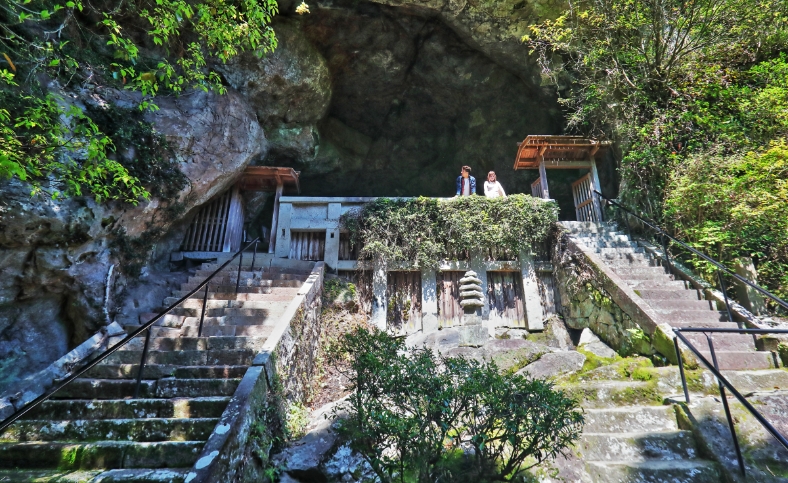
Located inside the inner grounds of Unganzenji Temple, visitors will encounter a cave. Enshrined within this cave there is a statue of the Goddess of Mercy, commonly referred to as ‘Iwato Kannon.’ Japan's most famous swordsman and war strategist, Musashi Miyamoto, spent his last five years here. Up until his death, Miyamoto secluded himself in this cave and penned his seminal work, ‘Go Rin no Sho’, or The Book of Five Rings. Compiled into a single volume expounding upon five separate themes, this book is an examination of Miyamoto's life and the art of swordsmanship.
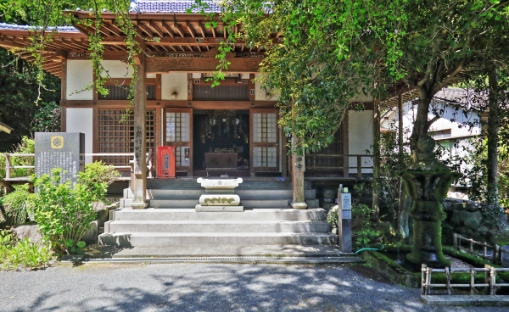
Encompassing the main temple building is an expanse of lush greenery, lending it an air of quiet dignity. View a display of artefacts associated with Musashi Miyamoto, a renowned swordsman of the early Edo period. Visitors will lose track of time examining the individual forms, figures, and facial expressions of the Gohyakurakan.
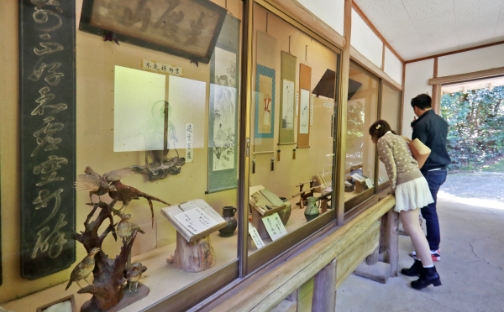
View a display of artefacts associated with Musashi Miyamoto, a renowned swordsman of the early Edo period.
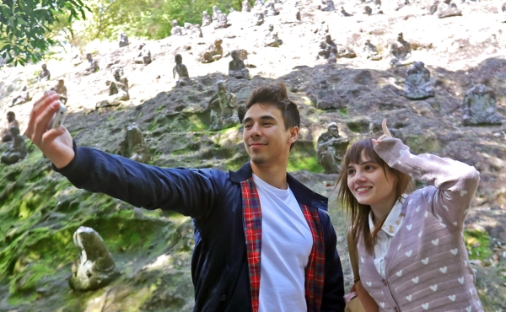
Visitors will lose track of time examining the individual forms, figures and facial expressions of the 'gohyakurakan' - the five hundred deciples of Buddha.
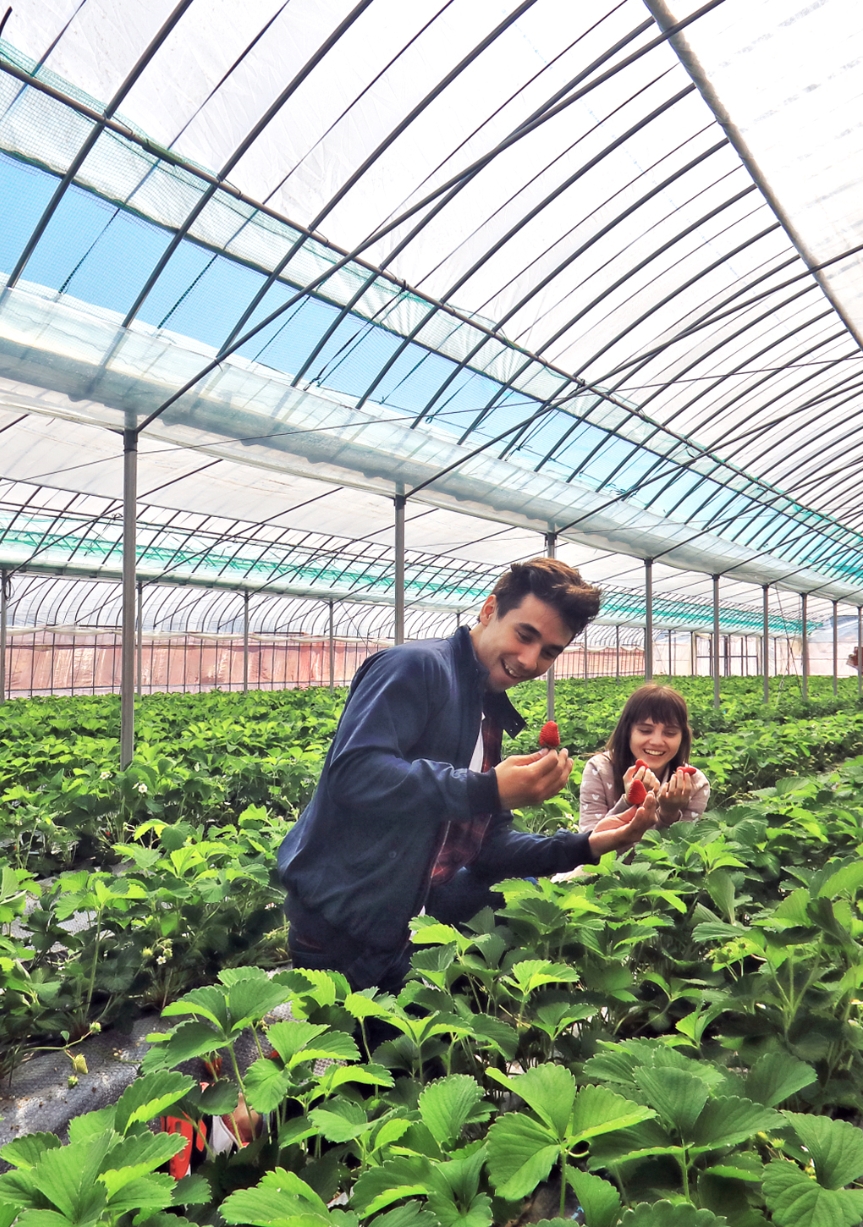
Experience Picking
Fresh and delicious Fruit
yourself!
Here at the fruit farm, tourists can enjoy the deliciousness of freshly-picked, ripe, seasonal produce. Visitors can harvest their own fresh fruits of the season from the warm mountain slopes, which maximize their tantilizing flavours. Enjoy everything from peaches, pears, and grapes in the summer, to persimmons and mandarins in fall. The popular strawberry picking season starts in December. Visitors are also welcome to harvest Japanese chestnuts, collect bamboo shoots, and gather rare eggs to enjoy alongside other seasonal foods, like sōmen noodles. * Peaches are only available for direct sale.
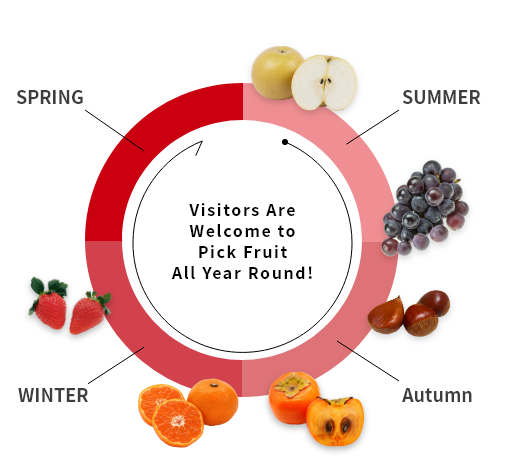
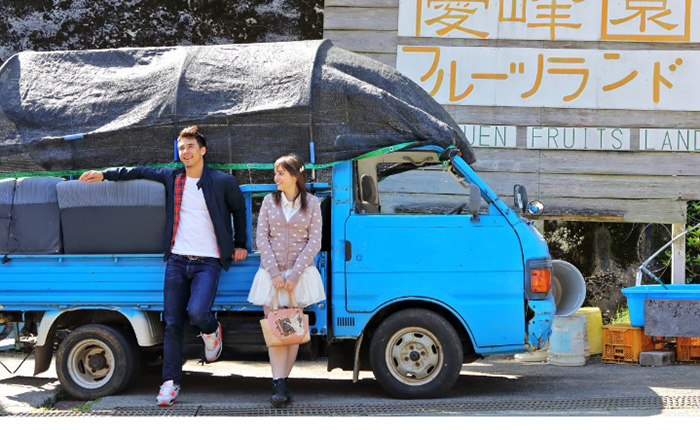

Go for a ride in the truck and marvel at the fruit farm's landscape.
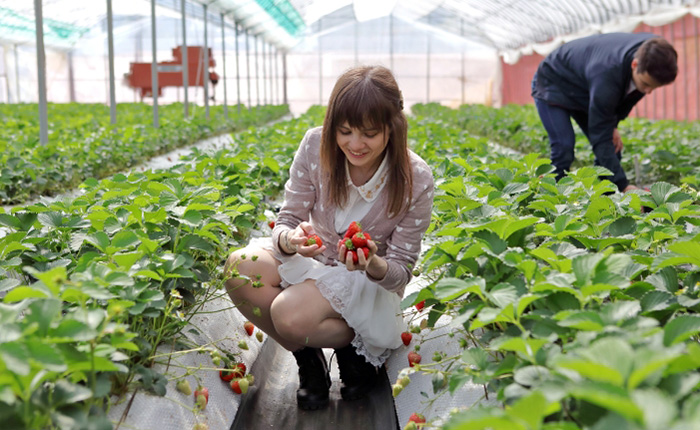
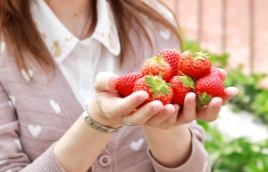
Visitors can partake in the popular strawberry harvesting season from December through May. A reservation is necessary for groups of 10 or more people.
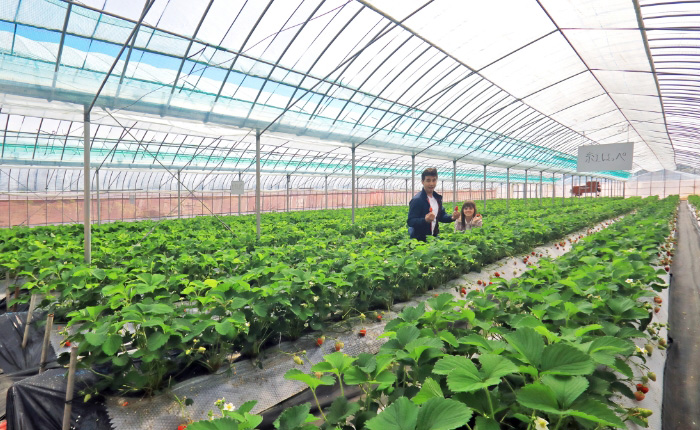
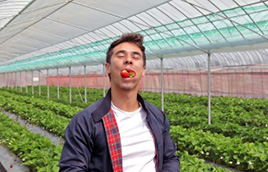
Strawberries (Benihoppe and Hinoshizuku Varieties Only) are all you can eat for one hour! Prices are as follows: Junior High School and Over: 100 yen, Elementary School and Under: Free. Not only can visitors participate in the 'all you can eat' option, but produce is also available to take home.
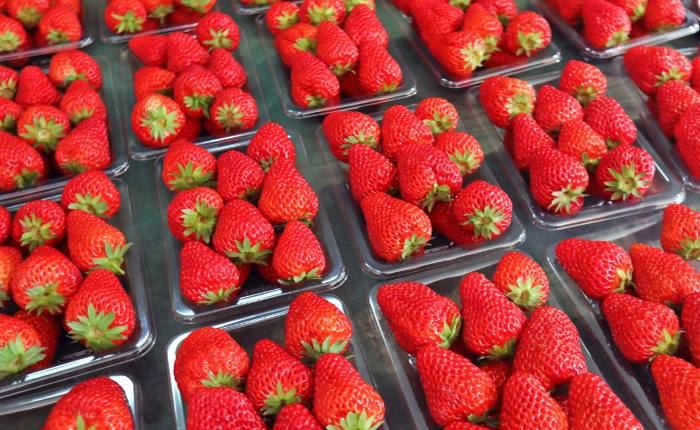
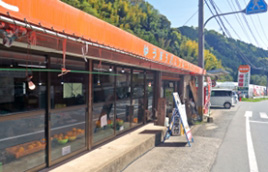
All the farm's ripe produce is available for direct sale.
Get in Touch with Samurai Culture, then
Rest and Relax at the Café.
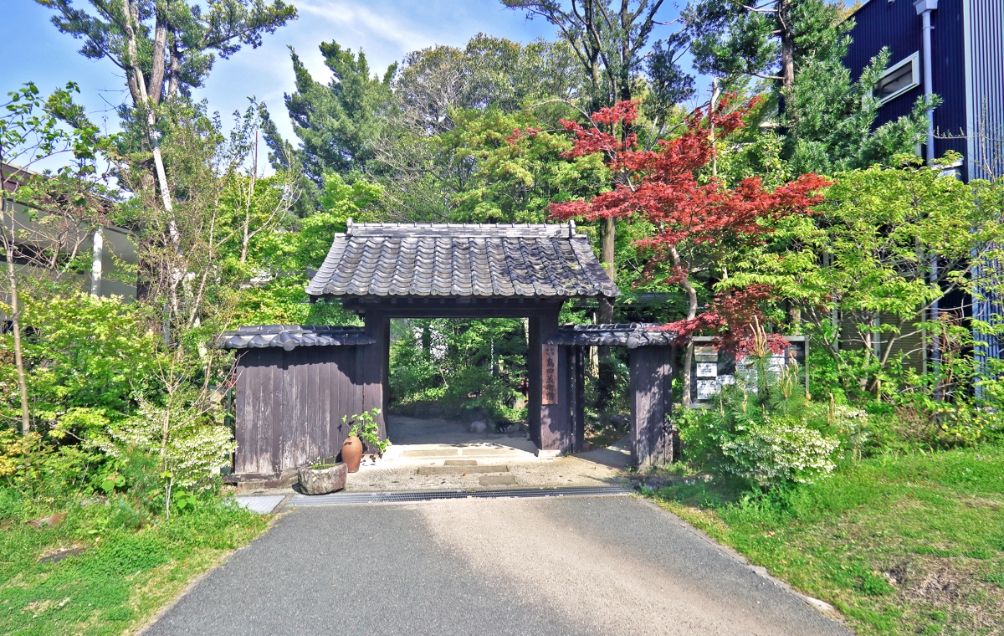
The Shimada Museum of Art is well-known for its complete collection of Musashi Miyamoto's works, relics, and armor. Beginning with a portrait of the master wielding two swords, the museum also exhibits Miyamoto's personal items, such as his India-ink paintings, letters, and weaponry. The museum looks onto a flourishing courtyard of foliage, where visitors can relax and take in the exhibits at their own pace. After having become acquainted with the samurai culture and world view, why not make your way to the on-site café to ponder the samurai lifestyle while enjoying the light streaming through the trees?
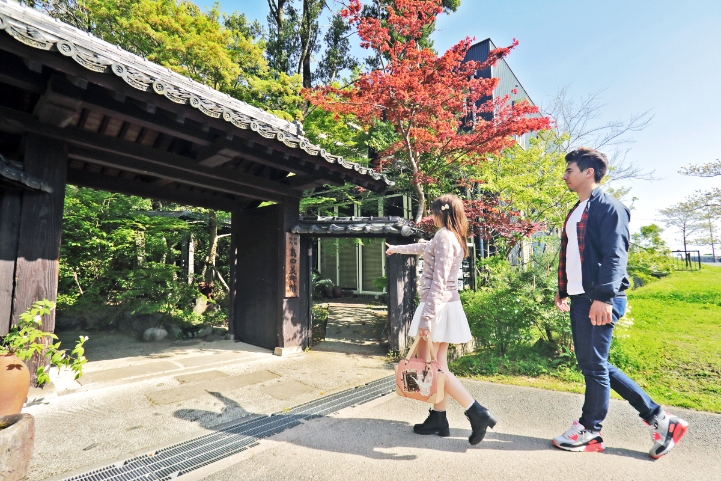
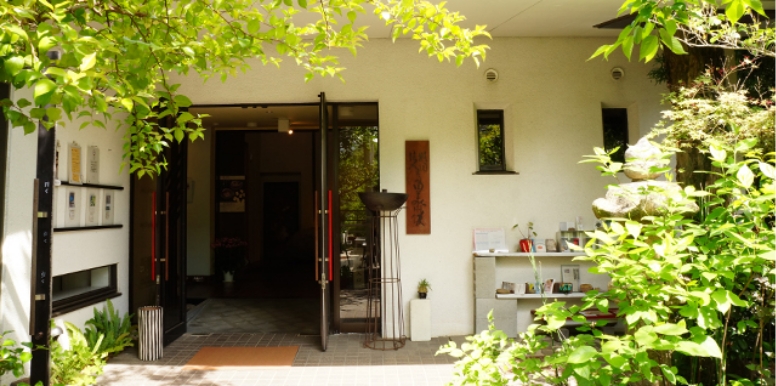
Japan's Most Famous Swordsman: Musashi Miyamoto Miyamoto was born in 1584, and since then his life has been the subject of a great number of books and movies. When he was only 13 years old, Miyamoto won his first duel against Kojirō Sasaki in what subsequently became known as 'The Battle of Ganryūjima.' Miyamoto went on to compete against numerous other swordsmen, and by age 29, he is said to have fought over 60 duels. It is also said that he won every single one.
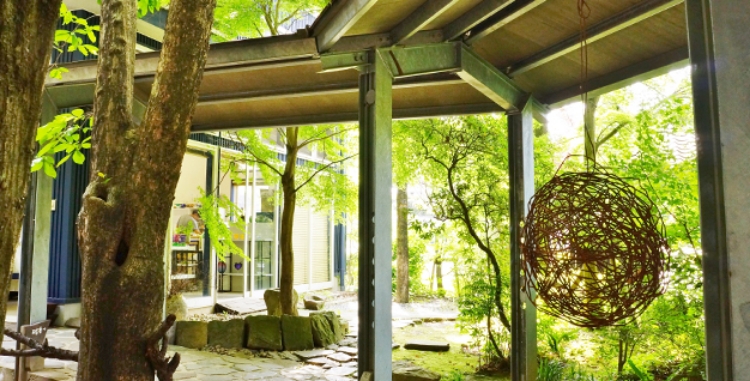
Musashi Miyamoto pursued the craft of swordsmanship in conjunction with the art of war to found the sword style known as 'Nitenichiryū,' which involves the use of two swords. When Miyamoto was 57, he came to Kumamoto and served under Hosokawa Tadatoshi, and it was here that he would spend his final five years. Leading up to his death in 1645, Miyamoto wrote his most prolific works, 'Hyōhō Sanjūgo Kajō' (The 35 Articles of Strategy) and ‘Go Rin no Sho’ (The Book of Five Rings). Miyamoto often spent his days in deep concentration, often rotating between meditating, drinking tea, painting, and writing.

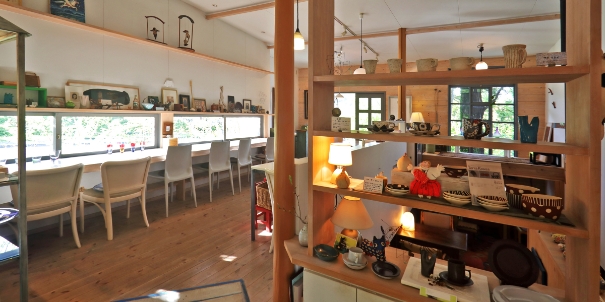
Adjoining the Museum of Art is the Smoky Tree Café, where visitors can enjoy home cooked muffins and cakes. Why not partake of some powdered matcha tea on the outside terrace, surrounded by nature? Even within the café, the natural light falling between the tree leaves illuminates the space. In the winter, join us by the fireplace for some warm tea.


At the end of one day, I felt truly connected to the old times through the remaining traces of the samurai. I went away with such a peaceful heart. Why not come and be won over for yourself?